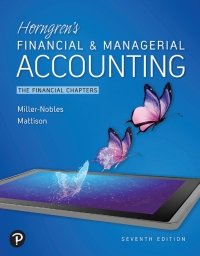11. Evaluating employer plans What retirement plan options are available? it is always your responsibility to learn about the basic and supplemental (voluntary) plans an employer may offer. There are noncontributory and contributory pension plans, which stipulate vesting requirements. Within these types, there is either a defined contribution plan or a defined benefit plan. Many employers also offer supplemental or voluntary programs such as profit-sharing, thrift and savings, and 401(k) plans. Consider a dialogue between Bob and Cho, both new employees at a big Fortune 500 company. Both had taken a personal finance class in college several years ago. Today, they are reviewing their notes from the recent new employee benefits meeting and helping each other complete the notes they've taken. BOB:1 heard the HR manager say that the company uses the cliff vesting schedule. I'm not sure what that means. CHO: I remember this from personal finance class. Cliff vesting requires vesting over years, BOB: What's the other option? CHO: The graded schedule. Graded schedule assumes that vesting is over years. BOB: Did you understand everything about the pension plans? Could you help me there? CHO: Suret A pension plan is a plan, which means that the contribution cost is In addition, it is a defined plan, which means that the plan states how much have to contribute CHO: The graded schedule. Graded schedule assumes that vesting is over years. BOB: Did you understand everything about the pension plans? Could you help me there? CHO: Sure! A pension plan is a plan, which means that the contribution cost is In addition, it is a defined plan, which means that the plan states how much have to contribute. your account BOB: I heard the HR manager say that they offer two supplemental plans, but I only wrote down the profit-sharing plan. Under this type of plan, on the company's performance. This is because when profits are low, the company makes contributions to the plan, and when profits are high, it pays However, employers minimum and maximum amounts to be paid as contributions. What is the other plan? CHO: The other plan she mentioned is and heavily invests in BOB: Because our employer is a big Fortune 500 company, our plan is voluntary. It takes everyone's company stock CHO: Well, I think I have my notes complete. I may need to clarify a few things that will apply just to me, vesting, profit-sharing percentages, and retirement age. BOB: Agreed. Thanks for helping me complete my notes! Grade It Now Save & Continue Continue without saving HE 11. Evaluating employer plans What retirement plan options are available? it is always your responsibility to learn about the basic and supplemental (voluntary) plans an employer may offer. There are noncontributory and contributory pension plans, which stipulate vesting requirements. Within these types, there is either a defined contribution plan or a defined benefit plan. Many employers also offer supplemental or voluntary programs such as profit-sharing, thrift and savings, and 401(k) plans. Consider a dialogue between Bob and Cho, both new employees at a big Fortune 500 company. Both had taken a personal finance class in college several years ago. Today, they are reviewing their notes from the recent new employee benefits meeting and helping each other complete the notes they've taken. BOB:1 heard the HR manager say that the company uses the cliff vesting schedule. I'm not sure what that means. CHO: I remember this from personal finance class. Cliff vesting requires vesting over years, BOB: What's the other option? CHO: The graded schedule. Graded schedule assumes that vesting is over years. BOB: Did you understand everything about the pension plans? Could you help me there? CHO: Suret A pension plan is a plan, which means that the contribution cost is In addition, it is a defined plan, which means that the plan states how much have to contribute CHO: The graded schedule. Graded schedule assumes that vesting is over years. BOB: Did you understand everything about the pension plans? Could you help me there? CHO: Sure! A pension plan is a plan, which means that the contribution cost is In addition, it is a defined plan, which means that the plan states how much have to contribute. your account BOB: I heard the HR manager say that they offer two supplemental plans, but I only wrote down the profit-sharing plan. Under this type of plan, on the company's performance. This is because when profits are low, the company makes contributions to the plan, and when profits are high, it pays However, employers minimum and maximum amounts to be paid as contributions. What is the other plan? CHO: The other plan she mentioned is and heavily invests in BOB: Because our employer is a big Fortune 500 company, our plan is voluntary. It takes everyone's company stock CHO: Well, I think I have my notes complete. I may need to clarify a few things that will apply just to me, vesting, profit-sharing percentages, and retirement age. BOB: Agreed. Thanks for helping me complete my notes! Grade It Now Save & Continue Continue without saving HE








